Frederic Joseph DeLongchamps was an American architect. He was one of Nevada's most prolific architects, yet is notable for entering the architectural profession with no extensive formal training. He has also been known as Frederick J. DeLongchamps, and was described by the latter name in an extensive review of the historic importance of his works which led to many of them being listed on the U.S. National Register of Historic Places in the 1980s.

William LaBarthe Steele was an American architect from Chicago, Illinois. He is considered a principal member of the Prairie School Architectural Movement during the early 20th century.
Purcell & Elmslie (P&E) was the most widely know iteration of a progressive American architectural practice. P&E was the second most commissioned firm of the Prairie School, after Frank Lloyd Wright. The firm in all iterations was active from 1907 to 1921, with their most famous work being done between 1913 and 1921.
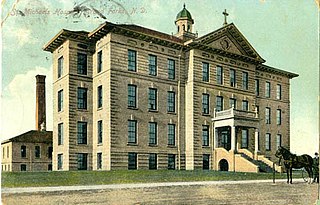
George Hancock was an architect active in North Dakota, Montana and Minnesota.

Proudfoot & Bird was an American architectural firm that designed many buildings throughout the Midwest region of the United States. Originally established in 1882, it remains active through its several successors, and since 2017 has been known as BBS Architects | Engineers.

Link & Haire was a prolific architectural firm in Montana, formally established on January 1, 1906. It designed a number of buildings that are listed on the National Register of Historic Places.
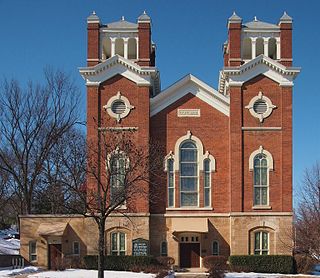
Charles N. Daniels (1828-1892) was an American architect active in Minnesota, North Dakota, and Washington.

The Burleigh County Courthouse in Bismarck, North Dakota was designed in the Art Deco style by architect Ira Rush. It was built in 1931 and was listed on the U.S. National Register of Historic Places in 1985.
Frank E. Wetherell was an American architect in the U.S. state of Iowa who was active from 1892 to 1931. He founded the second oldest architectural firm in the state in Des Moines, Iowa, in 1905. He worked with Roland Harrison in partnership Wetherell & Harrison. The firm designed numerous Masonic buildings.
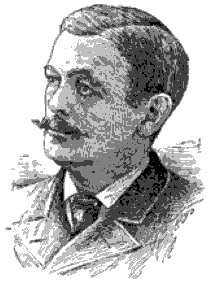
Milton Earle Beebe was an American architect who designed numerous buildings in Buffalo, New York, in Fargo, North Dakota, and elsewhere. He designed courthouses "at Warren, Smethport, Cambria, and Huntingdon in Pennsylvania, costing $100,000 each." Several are listed on the National Register of Historic Places. He also designed Early Commercial architecture buildings, residences, churches and public buildings.

William F. Kurke (1889–1965) was a prolific architect in North Dakota.
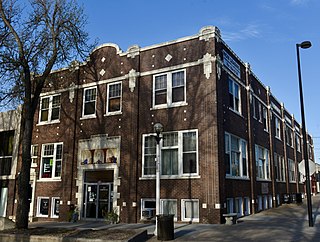
The Bismarck Tribune Building on N. 4th St. in Bismarck, North Dakota was designed by architect George H. Shanley and was built in 1920.

George H. Shanley was an architect of Great Falls, Montana.
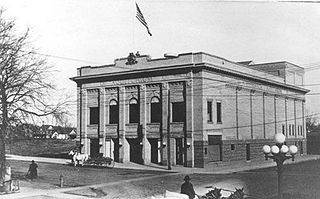
Arthur Wesley Van Horn was a prolific architect of Bismarck, North Dakota. A number of Van Horn's works, alone or as part of his firm, are listed on the U.S. National Register of Historic Places.
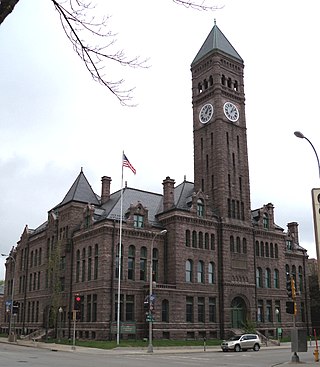
Wallace L. Dow (1844-1911), often known as W. L. Dow, was an architect of Sioux Falls, South Dakota. He has been referred to as the "Builder on the Prairie" and was "considered the premier architect of South Dakota in the late 19th century."

Joseph William Royer (1873–1954) was a prolific architect from Urbana, Illinois who designed many prominent buildings in Urbana, Champaign, and beyond. His work included civic, educational, commercial, and residential buildings, many of which are listed in the National Register of Historic Places and feature a wide variety of architectural styles.

Frederick W. Keith (1879-1954) was an American architect, beginning his career in Indianola, Iowa but gaining prominence while practicing in Grand Forks, Bismarck, and Fargo, North Dakota. After a successful independent practice, he joined forces with William F. Kurke as Keith & Kurke.
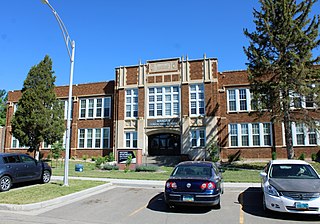
Gilbert R. Horton FAIA (1888–1985) was an American architect in practice in Jamestown, North Dakota from 1913 until 1980.

John P. Eisentraut (1870-1958) was an American architect most closely associated with South Dakota. Eisentraut designed a number of buildings, including Carnegie libraries and courthouses, several of which are listed on the National Register of Historic Places. He was one of South Dakota's leading architects during the first quarter of the twentieth century.

Robert A. Ritterbush FAIA (1891–1980) was an American architect in practice in Bismarck, North Dakota, from 1920 until 1967.



















